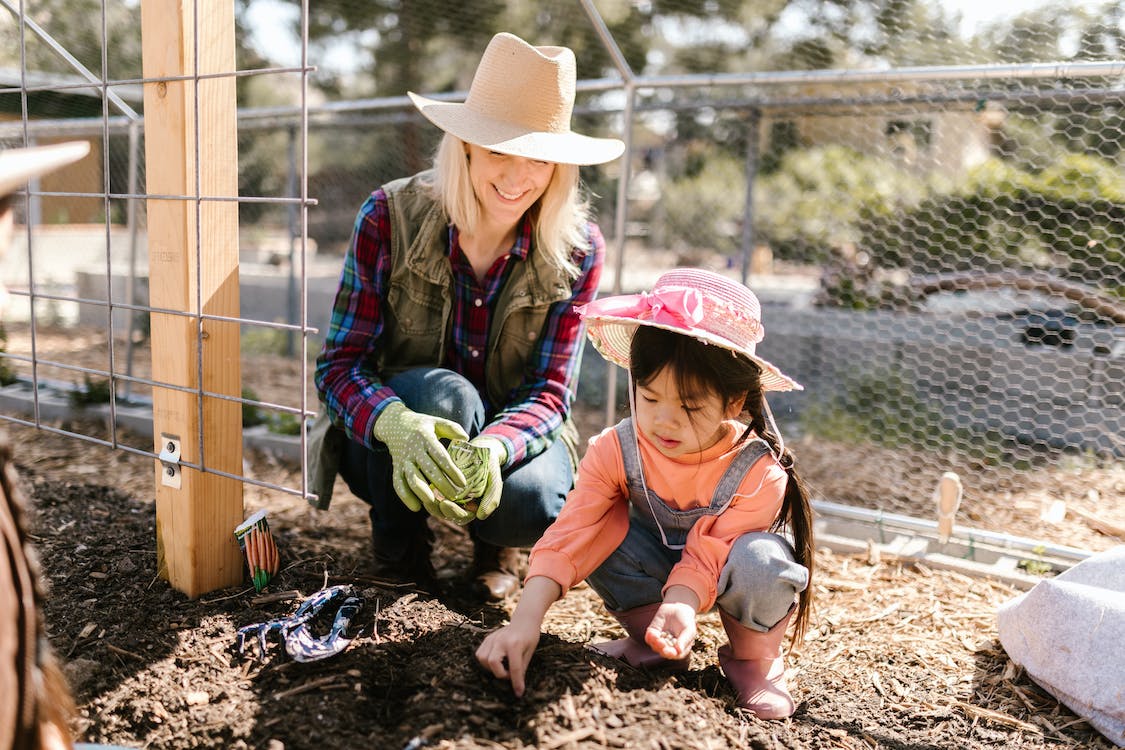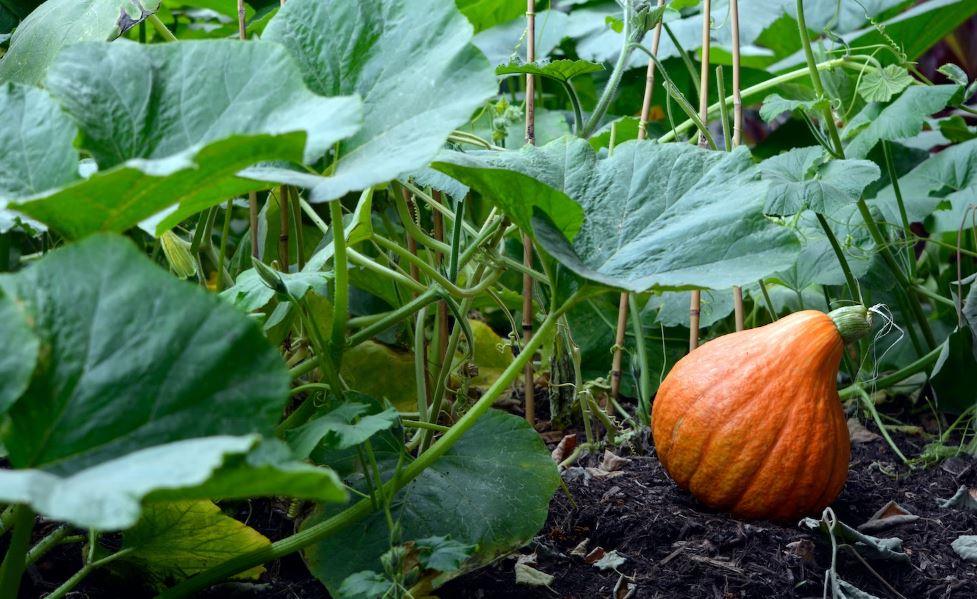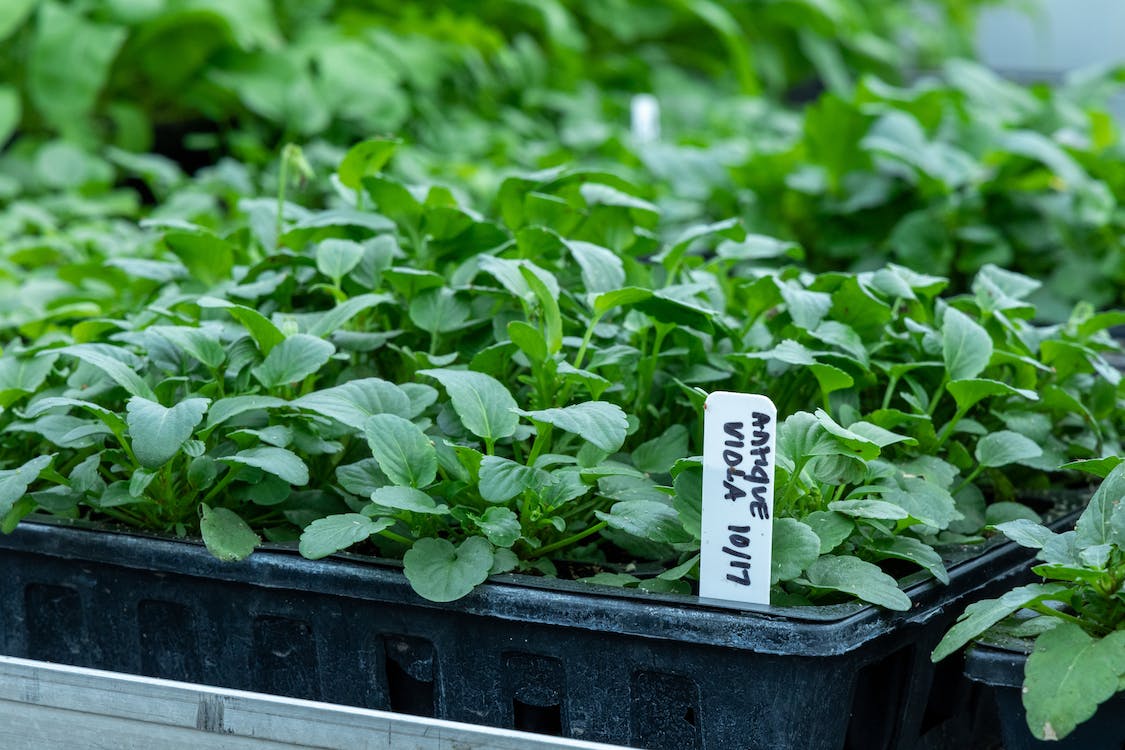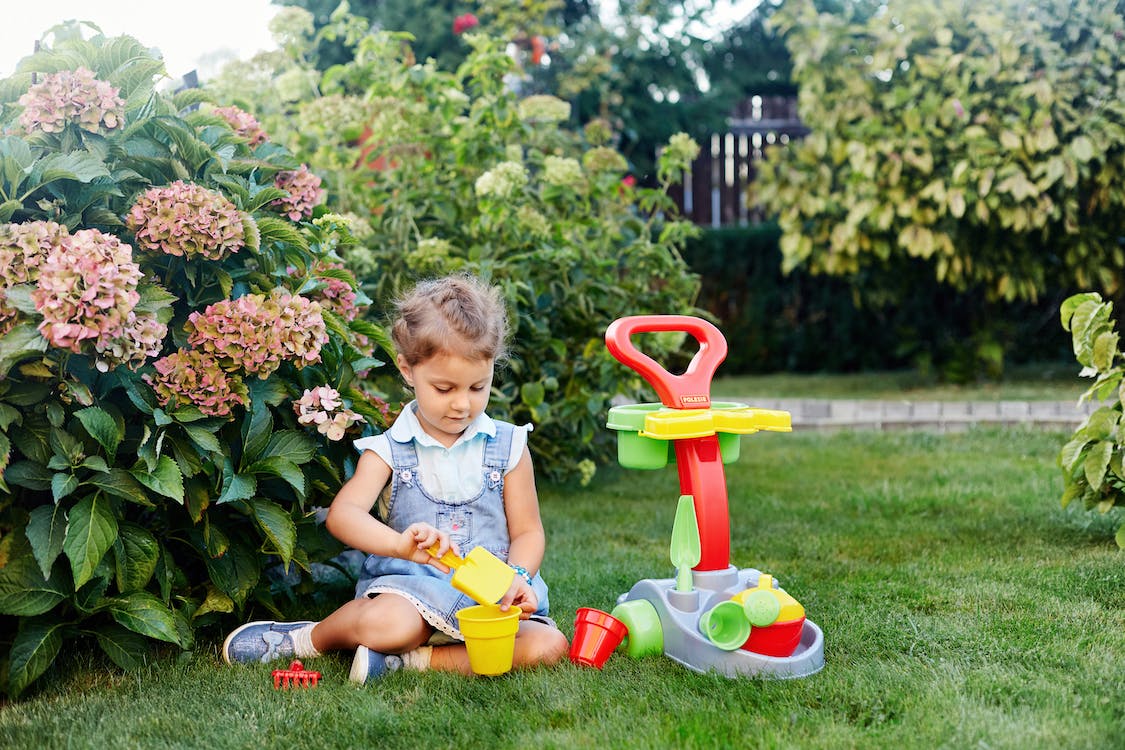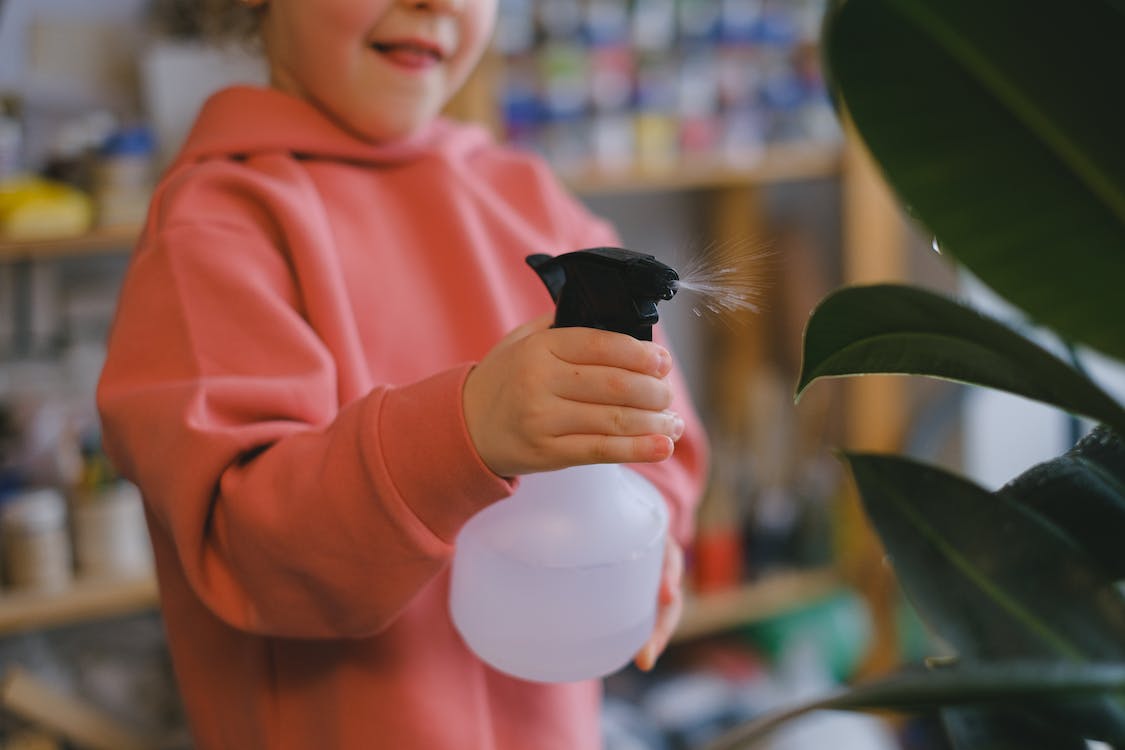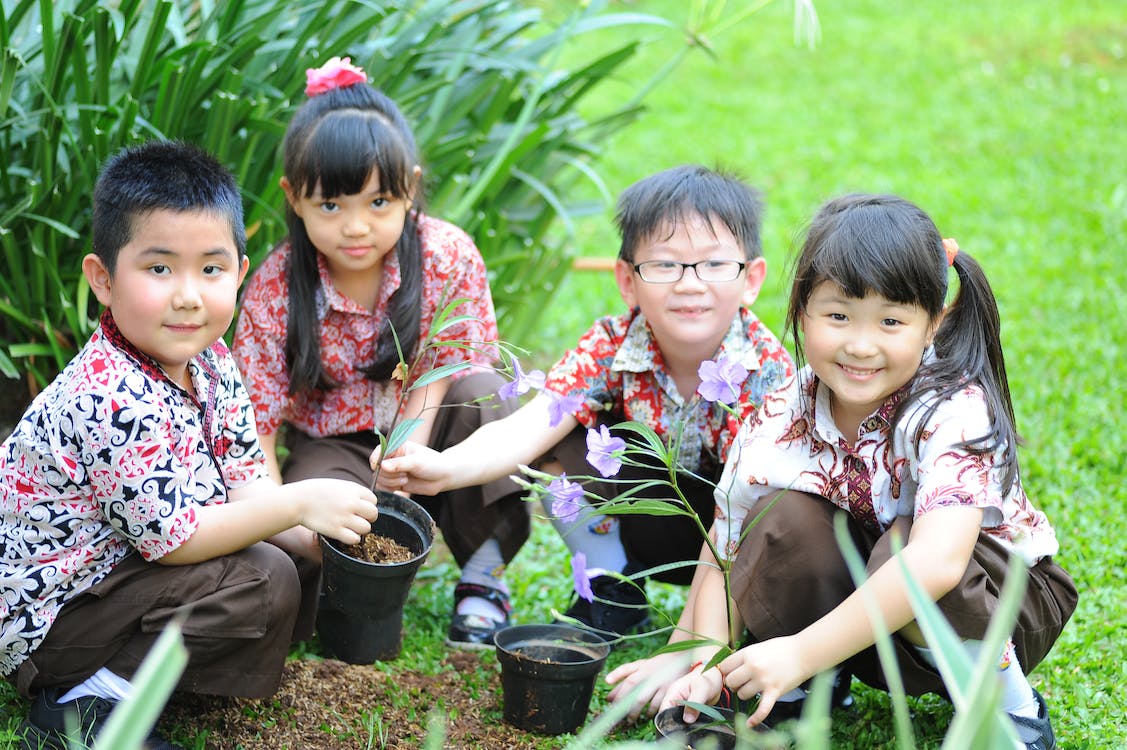Whether you’ve honed your gardening skills over the years or are stepping into the world of cultivating plants for the first time, engaging children in this enriching and educational endeavor can be a heartwarming and gratifying journey. Within the pages of this guide, we’ll unveil a wealth of guidance, innovative strategies, and imaginative approaches aimed at transforming gardening into an engaging and enduring family experience. From nurturing an appreciation for the wonders of the natural world to fostering fundamental life competencies, join us as we embark on an in-depth exploration of how gardening can foster not only a love for nature but also the growth of essential life skills, planting the seeds for a lifelong journey of passion and learning.
Crops to Plant with Your Kids
1. Pumpkin:
Pumpkins are a must for children’s gardens, despite their space requirements. To start, plant seeds on a small hill, with one seed per hole. Sprouting takes about a week, and the vines will soon spread. When three pumpkins are on the vine, remove new blossoms to support growth. Harvest in 80-120 days; mature pumpkins are firm to the touch and sound hollow when tapped. An adult should use shears for safe cutting. Save the seeds for snacking or future planting. Use the pumpkin for pies and carving fun during Halloween.
2. Carrots:
These unassuming orange wonders offer a delightful gardening experience for children. What makes them particularly exciting is the intriguing game of hide-and-seek they play with young gardeners. As their green shoots shoot up rapidly from the soil, children will eagerly watch their progress. However, the real magic lies beneath the surface, where the sweet, crisp roots remain concealed for a few weeks. The moment when those first hints of vibrant orange start peeking through the soil is bound to be a delightful surprise for your young gardeners. It’s a small yet wonderful reward for their patience and care, making the carrot-growing journey an enchanting and educational one for kids to enjoy.
3. Leafy Greens:
Kid-Friendly, Fast-Growing Salad Staples Leafy greens, those vibrant and nutritious salad stars, are an excellent choice for kids to cultivate in the garden. Varieties like arugula, mizuna, spinach, and romaine are not only healthy but also visually appealing, making gardening an engaging experience for children. One of the remarkable aspects of leafy greens is their rapid growth. From the moment you plant the seeds to the time of harvest, only a few short weeks typically pass. This quick turnaround means that children can witness the entire life cycle of these plants, fostering a sense of accomplishment and connection to their food.
4. Cherry Tomatoes:
Cherry tomatoes are also a must for kids’ gardens, offering a fun and flavorful experience akin to growing strawberries. Plant seedlings in full sun, use 2-foot stakes for support, and tie the plants loosely as they grow. Enhance the soil with compost and water at ground level to keep leaves dry. In just 50 to 75 days, you can enjoy the sweet rewards of your cherry tomato harvest. They also thrive in containers, making them a versatile choice for limited-space gardens.
5. Sunflowers:
This can be a delightful addition to kids’ gardens. Consider planting just one or two due to their space requirements. They grow rapidly, with seeds sprouting in a week, reaching a height of 2 feet within a month, and flowering with numerous edible seeds in eight weeks. Opt for ‘confectionery’ sunflowers for snacking purposes. Allow them to dry naturally in the sun, and the protein-rich seeds can be roasted. Don’t forget to save a few seeds for planting next year if you want to enjoy this charming cycle again in your garden.
Gardening with Kids: 5 Helpful Tips
Provide Quality Tools for Young Gardeners:
Investing in high-quality gardening tools for children is crucial for their gardening experience. Avoid cheap, plastic child-sized tools as they tend to break easily and can lead to frustration. Finding suitable tools for kids, including work gloves that fit small hands, can be a challenge, but it’s worth the effort. If necessary, consider modifying adult-sized tools like hoes or spades by sawing the handles shorter to make them more manageable for kids. Alternatively, allow them to use your tools while supervising closely. This not only ensures they have the right equipment but also conveys the importance of the work they’re engaged in, fostering a sense of responsibility and accomplishment. By providing quality tools, you’re empowering young gardeners to enjoy a more productive and enjoyable gardening experience.
Begin with a Modest Garden:
When embarking on a gardening adventure with your children, whether you’re establishing a new garden or introducing them to an existing one, it’s wise to start small. Starting with a manageable garden size is key to preventing overwhelm and ensuring a positive gardening experience for everyone involved. If you’re incorporating your kids into your already-established garden, consider allocating a specific small area that is entirely theirs, distinct from the entire garden. This designated space allows them to take ownership and responsibility for their garden patch. As you and your children learn and grow together in the world of gardening, you can gradually expand their garden area, giving them the opportunity to explore and experiment at their own pace. This approach not only fosters a sense of ownership but also encourages a gradual and enjoyable learning process for your young gardeners.
Involve Them Throughout the Journey:
To maximize your children’s learning experience, engage them in every step of the gardening process. It’s essential for them to grasp the context of their activities, understanding that gardening is not just fun but also a meaningful contribution to the family’s well-being. While it’s enjoyable to plant and nurture their garden beds together, take it a step further. Encourage your children to take ownership of the entire process, including harvesting and preparing their crops for the table, regardless of how modest the yield may be. By allowing them to take charge of these tasks, you instill a sense of responsibility and achievement, helping them connect the dots between their efforts and the food they enjoy. This holistic approach to gardening education ensures that children not only have fun but also appreciate the value of their contributions to the family’s sustenance.
Maintain Realistic Expectations:
It’s essential to maintain realistic expectations when gardening with kids. While it’s beneficial to check the garden frequently, there will inevitably be days when children might not feel like watering the plants or examining new growth, and that’s perfectly fine. Kids will be kids, and there will be moments when they’d rather continue playing with their toys, like Legos, than tend to the garden. Don’t be disheartened if they aren’t eager to visit the garden on a particular day. Instead, remain patient and understanding. You can always ask again the following day. In fact, these moments when they take a break from gardening can provide you with some valuable alone time to care for and appreciate your plants. Ultimately, the journey of gardening with kids is a blend of shared experiences and individual moments, and both can be equally rewarding.
Celebrate Their Achievements:
Boost your children’s motivation by showcasing their gardening accomplishments. During garden tours with friends or family, make it a point to highlight the areas where your children have been actively gardening. Share their progress proudly. Capture moments of their harvest through photos and consider sending these snapshots to the grandparents. Recognizing and celebrating their efforts and achievements not only bolsters their confidence but also serves as a powerful motivator for them to stay engaged with the project. It reinforces the idea that their contributions are valued and appreciated, encouraging continued involvement in the garden.
Conclusion
Although embarking on a gardening journey with your children may initially seem daunting, the rewards are well worth the effort. As your child delves into gardening, the experience becomes increasingly enjoyable and enriching. Furthermore, the gardening process imparts valuable life lessons, such as patience and the importance of persistent effort before achieving success. Through gardening, children learn not only about the natural world but also about themselves, cultivating skills and qualities that will benefit them throughout their lives.

